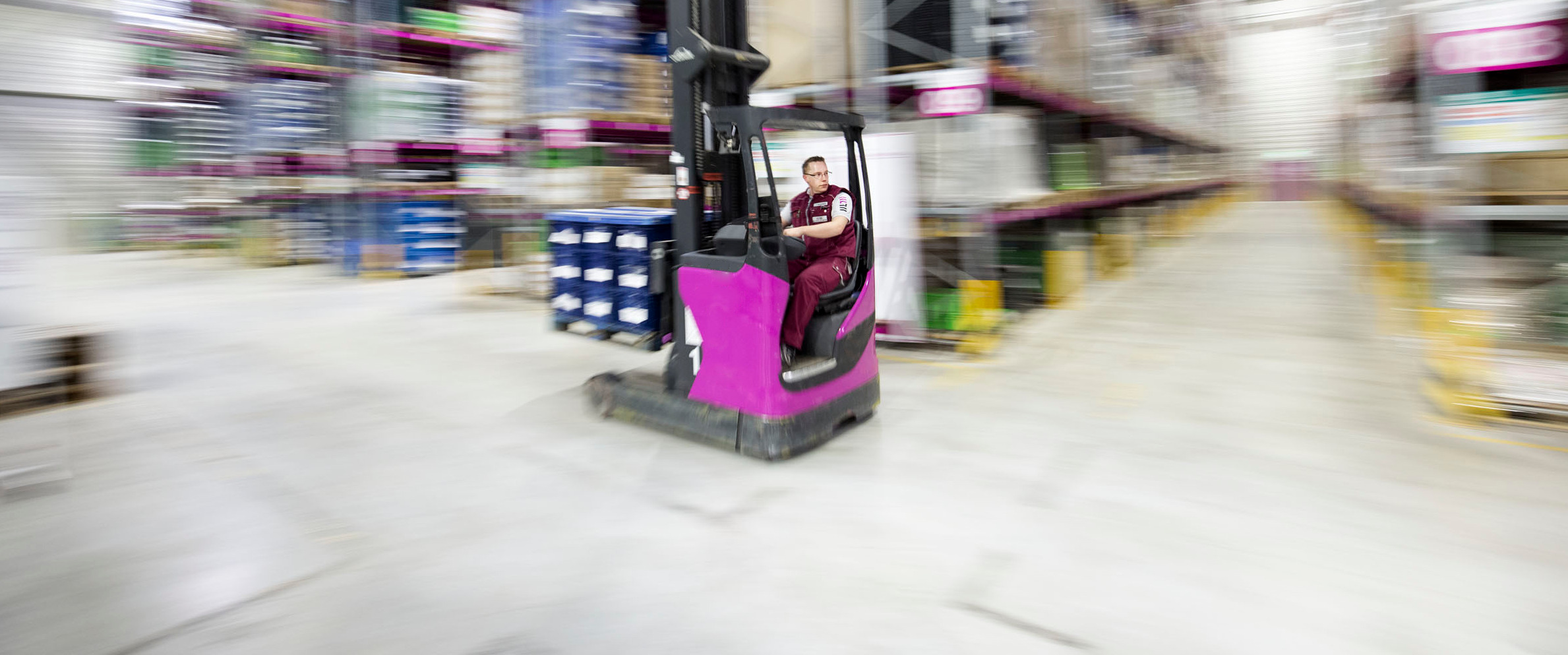
In manufacturing companies, logistics is only a means to an end. This is why a holistic assessment of the logistical flow of materials, goods, and information at the production site is often neglected. Opportunities for cost reduction and service optimization remain unused.
If you want to check the productivity of logistical systems, i.e. find out how effectively and efficiently the respective processes are implemented, you must identify key logistical parameters for your processes. If these parameters are not standardized across the entire company, it means that essential basics are missing - that which is not assessed cannot be controlled, optimized, or accounted for. It is also important to continuously monitor the processes. Anyone who fails to monitor the productivity for a long period is tolerating and ignoring deficits. The best thing would be to identify and eliminate.
Our 5-step model helps you identify deficiencies in your logistics system and systematically exploit unused potential. It starts with assessing the status quo and extends up to the implementation of selected options for action.
We first obtain an overview of the current in-house logistics processes. We use methods such as REFA, MTM, or digital tools for automatic assessment of manual processes in order to identify objective performance indicators. The data are then prepared, consolidated, and evaluated for the next step in the following process analysis. The resulting operational transparency forms the basis for uncovering improvement potential on the shop floor.
We then consult with you to specify the process areas that should be considered in more detail as well as analyzed and assessed based on the previously determined key parameters in order to obtain the best results. The use of tools such as material flow diagrams and function-demand analyses is just as important in the analysis phase as the involvement of experts who are involved in the day-to-day operations (e.g. department heads). Benchmarking, i.e. comparison of internal and external data, enables us to validate all analyses.
The analyses' results show where there is need for action. They help identify bottlenecks and optimization potential. Here, we pay special attention to the feasibility in each case. The logistics resources are often limited and not all aspects can be handled at the same time. To achieve tangible results, we select the most promising from the set of potentials. Cost-benefit analyses are crucial as they help prioritize potentials in terms of their profitability. The next step entails deriving viable options for action for the best valued potentials.
The insights gained serve as a basis to develop conceptual approaches for fundamental improvement of the current situation, upon which we derive specific options for action. These can be different depending on the objective. Examples include:
Finally, we define how to tap into identified potential and successfully implement the selected options for action in operational processes. We develop an ideal implementation concept with clear targets. We also define the time horizon within which your potentials should be implemented, depending on the available financial, human, or other resources: short, medium, or long term. In addition to what and when, answering the question “who” is also crucial. A team is set up with clearly distributed roles and responsibilities. At the same time, the necessary organizational conditions are defined.

Once the optimization measures have been implemented, the goal is to make sure this high level of efficiency is maintained. More information on this can be found under the following link: Transparency and reduction of personnel costs in logistics.
In our business case "Reducing Logistics Costs", we'll show you a real-life example of how effective and efficient logistics processes generate success for your business.
Our 5-step model will motivate you to go for your logistics goals and to achieve them. Every company may face different obstacles but we're still up for the challenge.
Müller - Die lila Logistik SE
Ferdinand-Porsche-Str. 6
74354 Besigheim
Germany